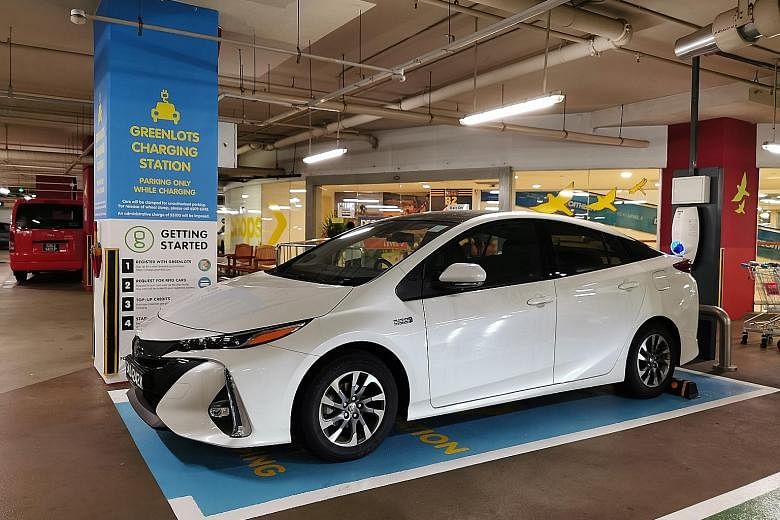The Toyota Prius PHV (plug-in hybrid vehicle) offers around 50km of electric range with the reassuring backup of a fossil-fuelled powertrain.
Does combining a large battery and petrol tank put range anxiety to rest? Or does it end up an unsatisfactory compromise?
First, here are my most salient observations about the car.
Having two powertrains add more weight. The Prius PHV is 125kg to 150kg heavier than a non-plug-in Prius, and has a much weaker electric motor than a pure electric vehicle. As a result, the car ends up being less dynamic compared with a pure electric vehicle (EV) or a well-tuned petrol model.
The sizeable battery pack sitting beneath the boot floor also eats into the luggage space, which is something that will not escape notice when you try to squash a foldable pram under the hatch.
The PHV attracts the same road tax as a non-plug-in Prius. A pure EV of the same size could draw a higher tax.
Over the past three months, The Straits Times used and charged the car in various ways.
When the car was regularly and reliably charged from a private power point in a landed property, not a drop of petrol was used.
When it was not charged at all, the PHV still delivered an impressive fuel economy figure of 5.8 litres/ 100km, even when driven uneconomically.
The lighter non-plug-in Prius will probably improve on this figure if it is driven largely in the same manner, but it will not offer the option of decent-range electric motoring.
Things got interesting when the car was charged intermittently. Theoretically, you could achieve anything between zero and 5.8 litres/ 100km. I managed 3.2 litres/100km.
Along the way, I discovered that Singapore's public charging infrastructure is sufficiently accessible for now, considering the current population of EVs here.
There was a charging point at a Shell station within 3.2km of my home and I also found one at a shopping centre. But spending two hours to charge a car at a petrol station requires commitment.
Notably, the reward of earning kilometres of electric motoring pales in comparison to what might be gained from rapid-charging a pure EV.
In fact, had I been using a dedicated EV and had access to a fast charger (the Prius PHV has no fast-charging option), the amount of theoretical electric range gleaned from the 31/2 hours I spent charging would have covered the entire distance driven that fortnight.
Of course then I would not have the safety net of a petrol engine, which is critical to a driver who depends on the public charging infrastructure. With such a low charging speed and capacity, juicing up the PHV may make sense only if you do not have to go out of your way to do so.
If you have access to a regular three-point plug at your workplace, the PHV can run on battery the days you go to work, and you can fall back on the petrol engine on the weekends and holidays.
There is already a substantial number of regular Priuses on Singapore's roads.
Which is the more sensible choice: a Prius PHV or a regular Prius?
That will depend on your lifestyle and if you think driving a PHV or any EV is worth the trouble and time.

